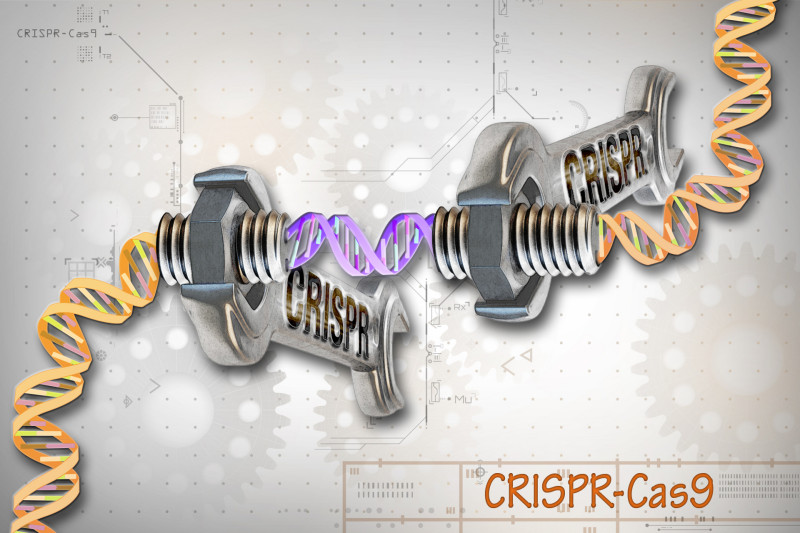“We think this represents a safer and more precise way to make changes in the genome,” said Dr. Kiran Musunuru of Penn and a co-leader of the study. “It’s is the better way forward if you want to take CRISPR into the clinic.”
The rationale for fetal genetic therapy is simple: it could halt a disease before it causes irreversible and even fatal damage. In people, the inherited liver disease that the scientists targeted in mice, called hereditary tyrosinemia type 1, starts damaging the liver months before birth. Another rationale: because a fetus’s immune system is immature, it is less likely than even a newborn’s to attack the alien CRISPR molecules.
For their study, published in Nature Medicine, Musunuru and his colleagues gently opened the uterus of a pregnant mouse, removed the fetus from the amniotic sac, and injected CRISPR into the vitelline vein, which is near the surface of the sac and connects to the liver. “We wanted to make sure we got the genome editor into the liver rather than everywhere else,” Musunuru said. The fetus was then replaced in the uterus and was born normally.
Instead of using the original form of CRISPR, which cuts DNA where a gene is mutated and inserts a replacement string of A’s, T’s, C’s, and G’s, the scientists used the form of CRISPR called base editing. Invented just two years ago, base editing changes an incorrect DNA letter, or base, to the correct one, such as a C to a T or a G to an A. Its advantage is that it doesn’t need to cut DNA to do this, as CRISPR 1.0 does; those cuts can wreak genetic havoc, with unknown consequences for CRISPR’d cells.
For a dry run, the scientists first made a CRISPR base editor that changes a gene called PCSK9, which makes a protein that helps regulate the amount of cholesterol in the bloodstream, into a super-cholesterol-lowering form. When injected into mouse fetuses, the base editor changed liver cells as intended and left other organs alone. Crucially, the mouse mother showed no effects of the CRISPR treatment. After birth, the baby mice had ultra-low cholesterol levels, showing that the CRISPR base editor had worked. Only about 15 percent of the liver cells of the baby mice had been edited, but that fraction remained stable through the animals’ adulthood.
The amount of genetic havoc from the base editing was low: about 2 percent, compared to 40 percent for many uses of traditional CRISPR. And none of the likely spots for “off target” effects — DNA sites that resemble the target and so might be inadvertently edited — showed any sign of being altered.
The Philadelphia scientists then tried their technique on hereditary tyrosinemia type 1. HT1, which strikes 1 in 100,000 newborns worldwide, is caused by any of several mutations in a gene called FAH. All the mutations cause the build-up of toxic breakdown products of the amino acid tyrosine, a component of protein, and ultimately destroy the liver. Treatment with the drug nitisinone and a strict tyrosine-free diet is not always effective, with the result that children sometimes develop fatal liver failure or liver cancer.
The scientists used their base editor on a gene related to the disease-causing one. If this gene, called HPD, is disabled, then no toxic metabolites of tyrosine ever get to where FAH is unable to handle them.
Changing a C to a T in the HPD gene disabled it. No toxic molecules built up in the livers of the fetal mice. No other organs showed signs of editing, no off-target effects were detected, and having only 15 percent of their liver cells edited was enough to cure the mice and keep them cured into adulthood. “We weren’t expecting it, but the genome-edited mice did much better” than mice treated with nitisinone, Musunuru said. “They survived longer and gained more weight.”
The scientists hope to study fetal base editing for other severe congenital diseases. It remains to be seen whether this technique or conventional gene therapy, which provides an entire replacement gene, will work better.
“I’d consider that CRISPR isn’t a replacement” for the latter, Waddington said, “but will be an additional tool” for curing genetic diseases in the womb.
